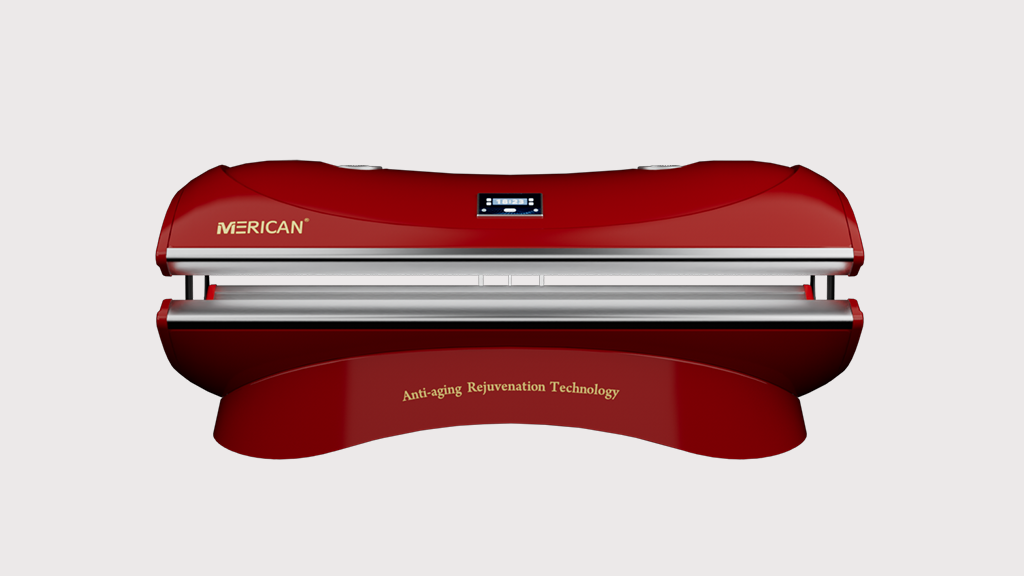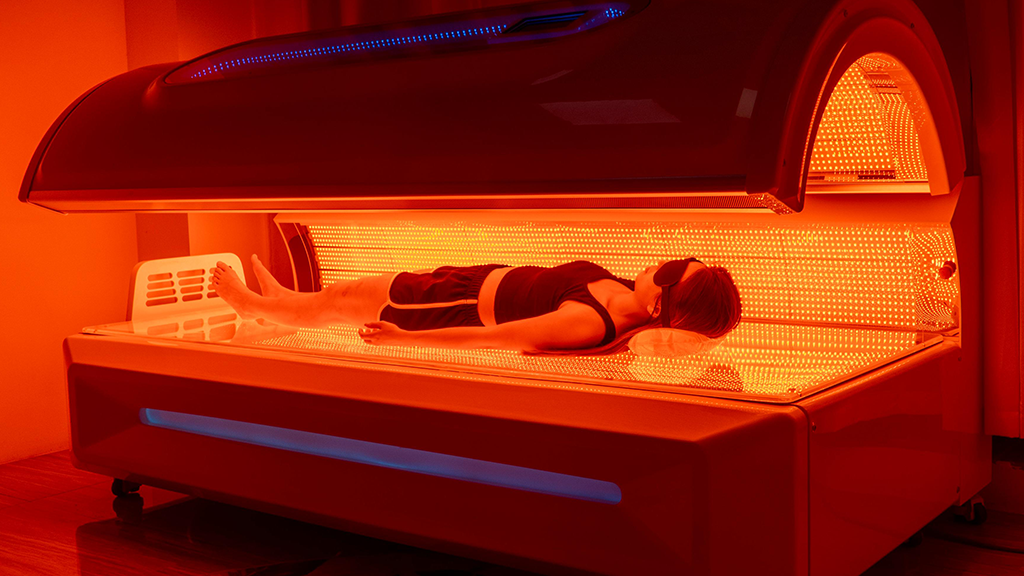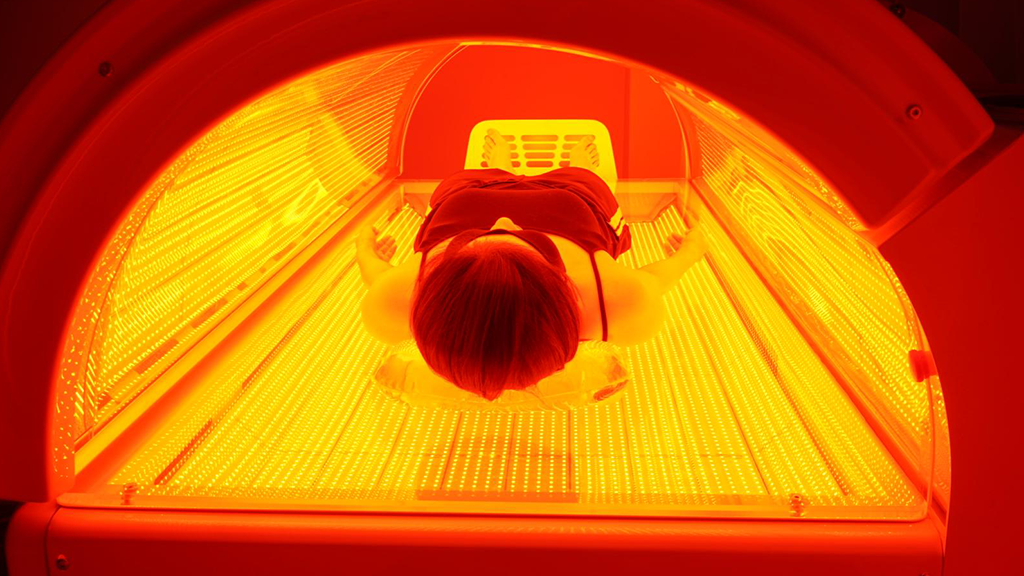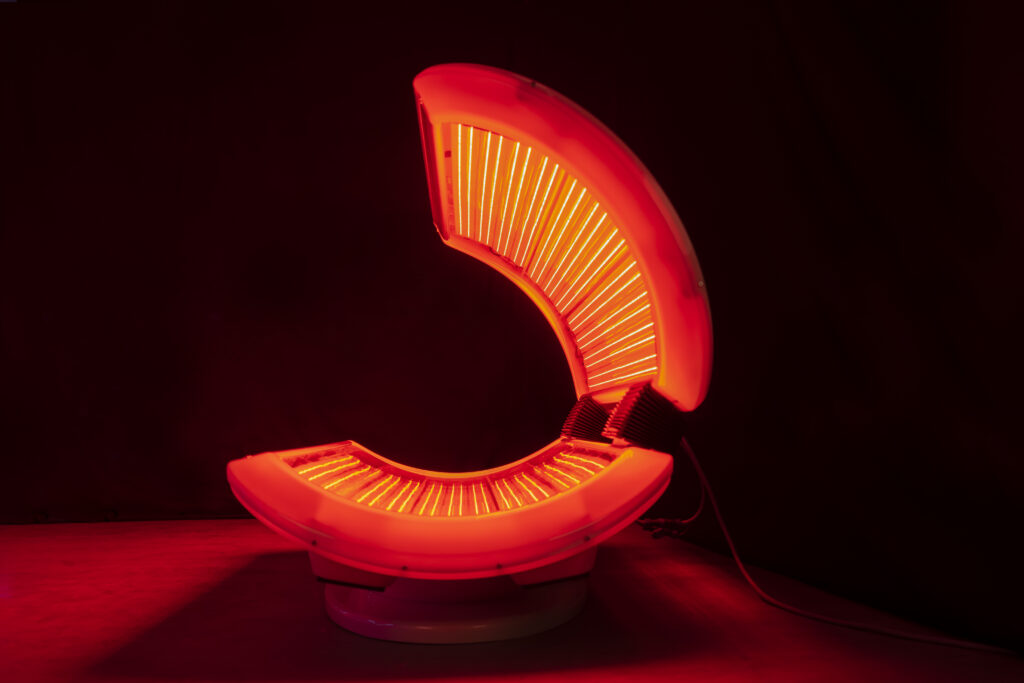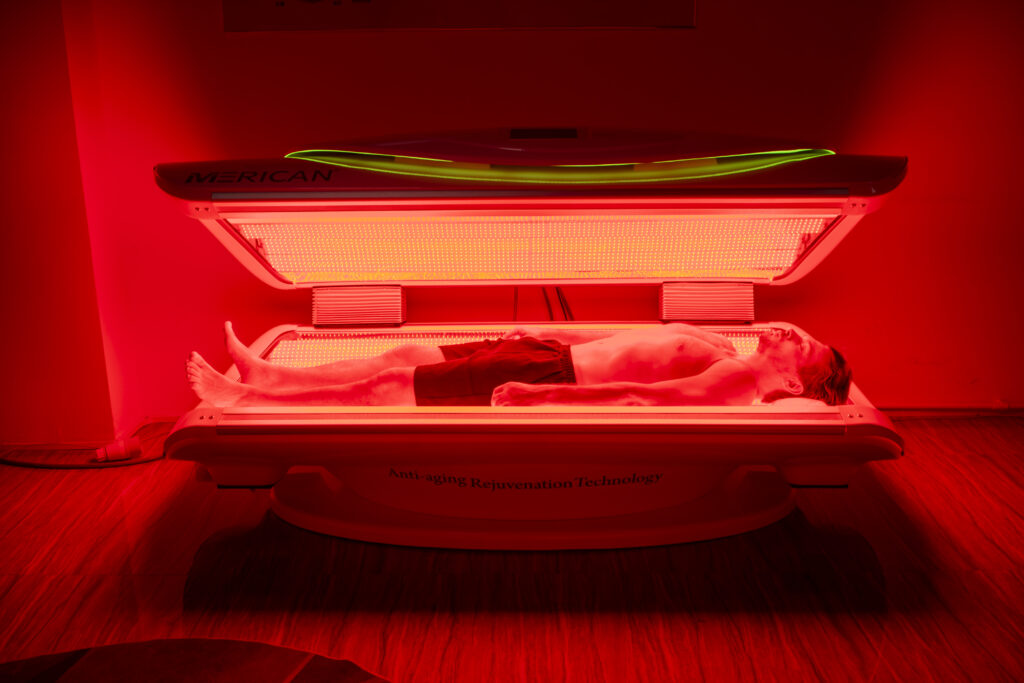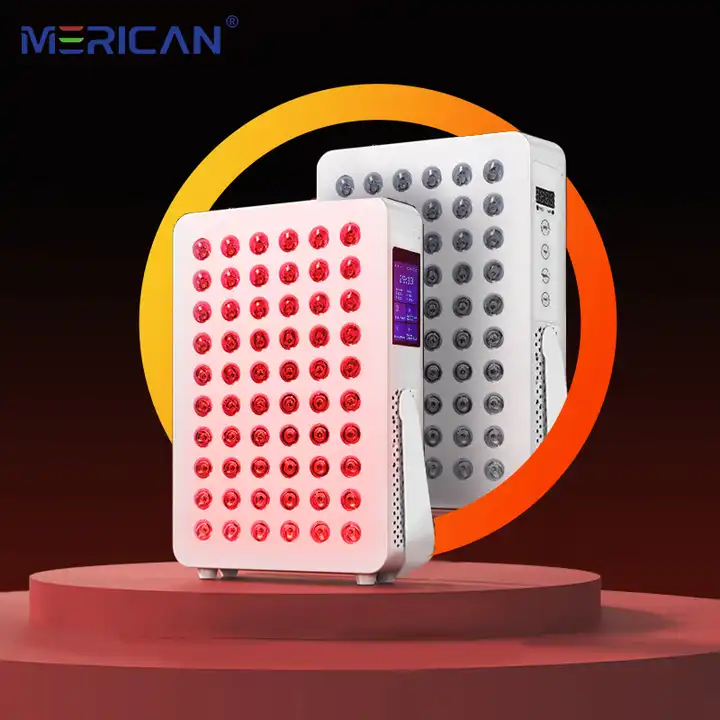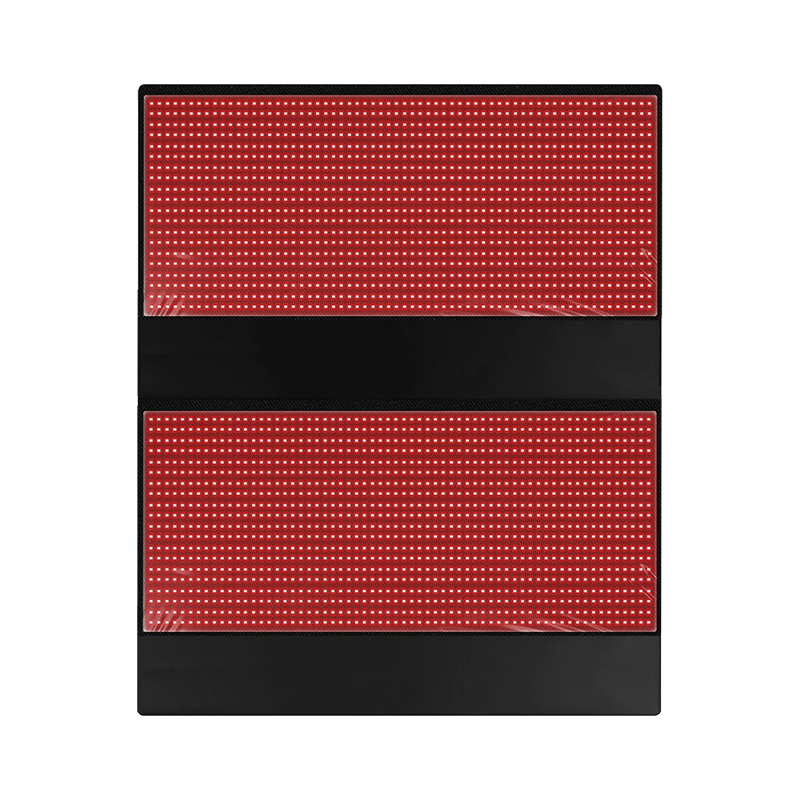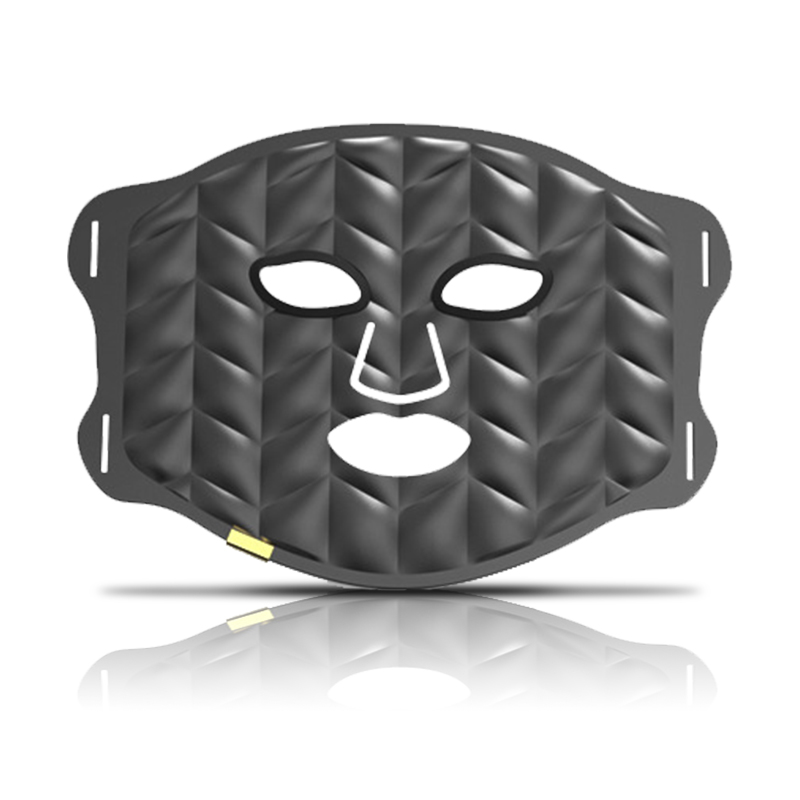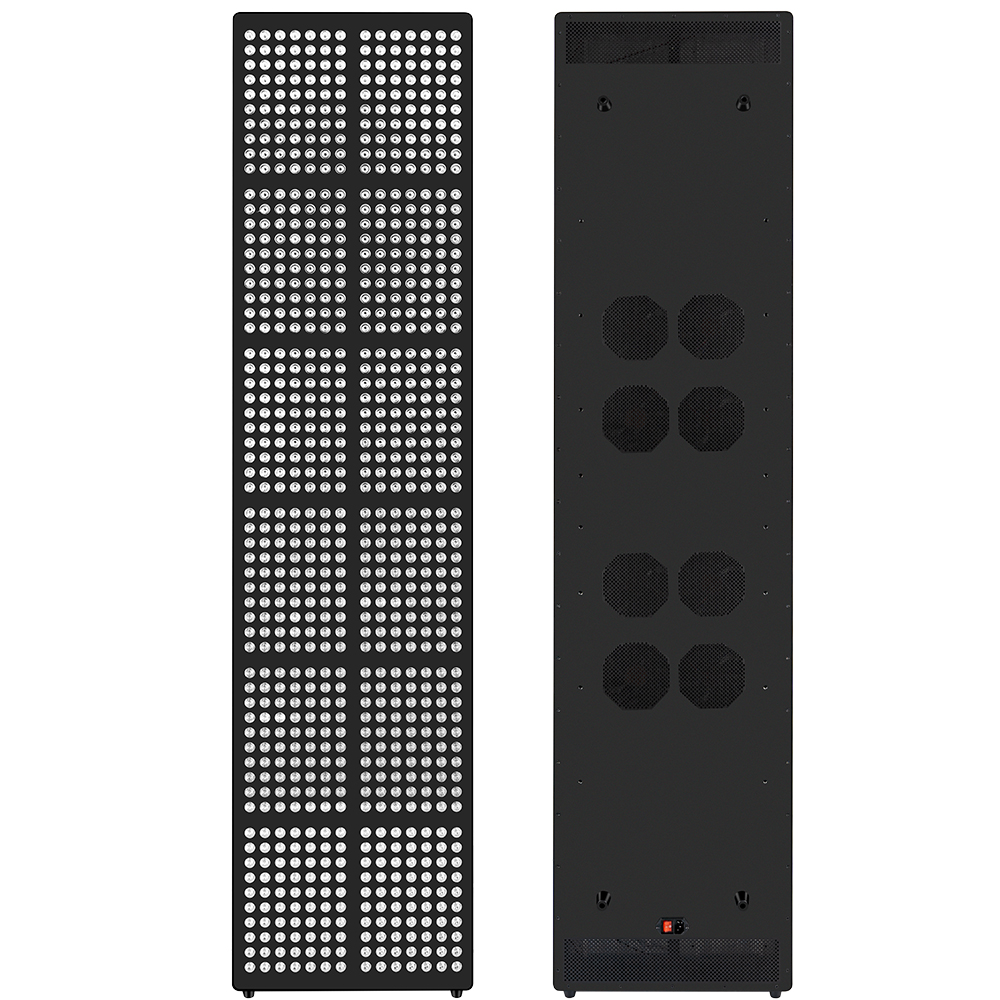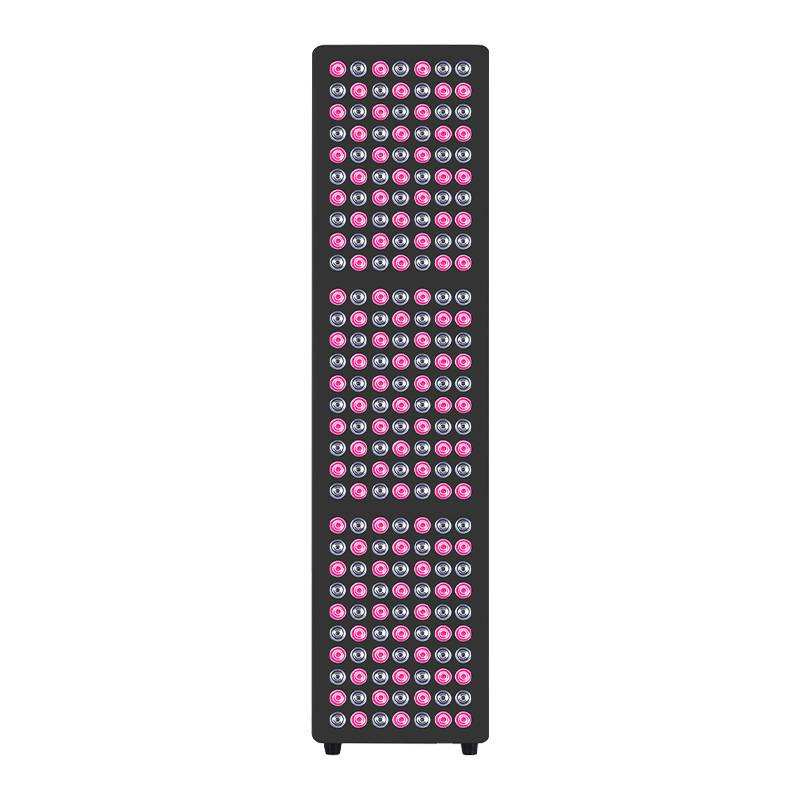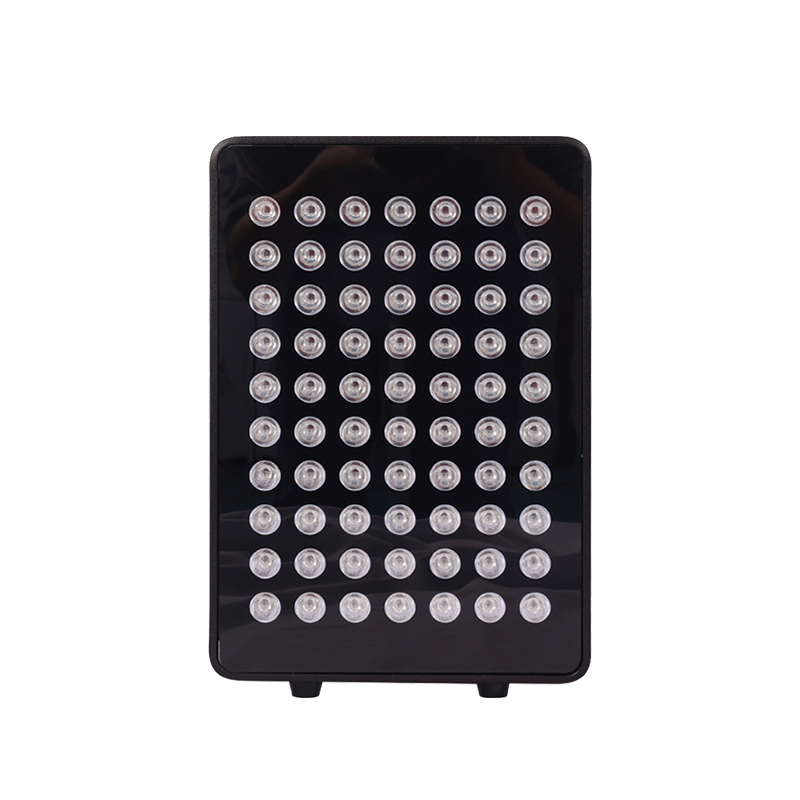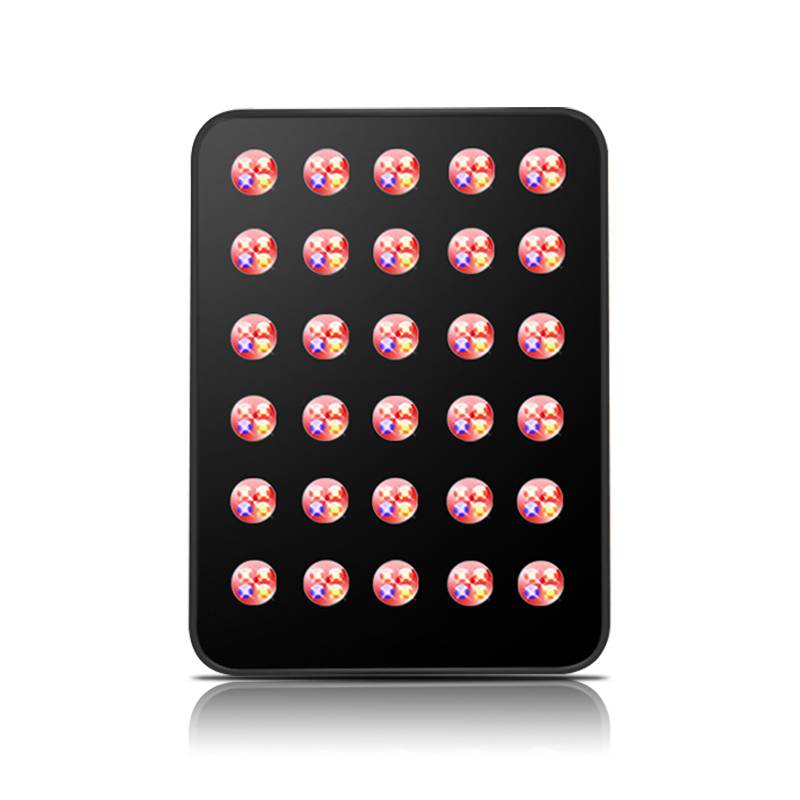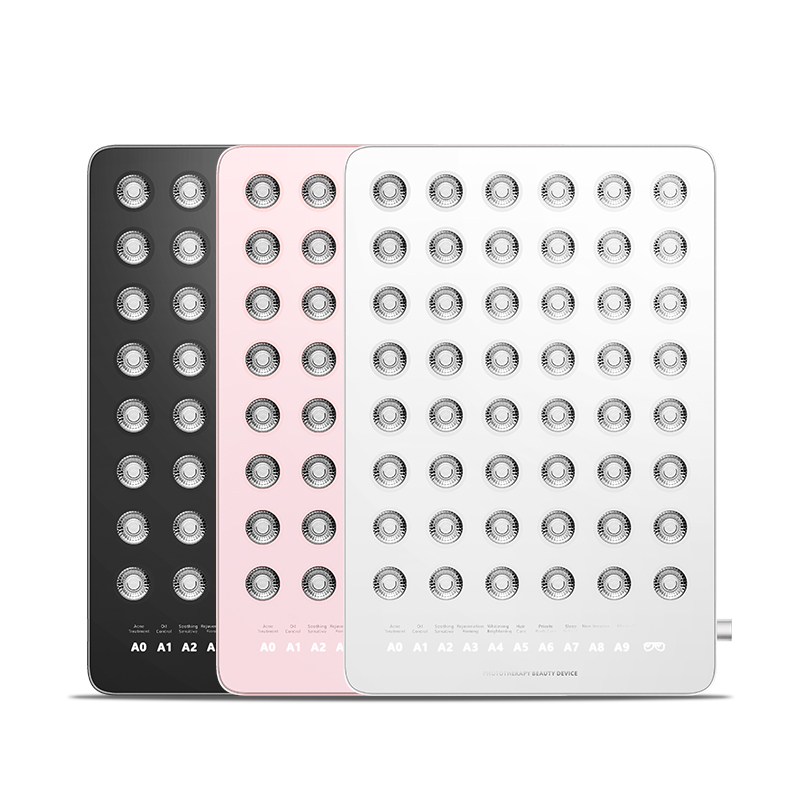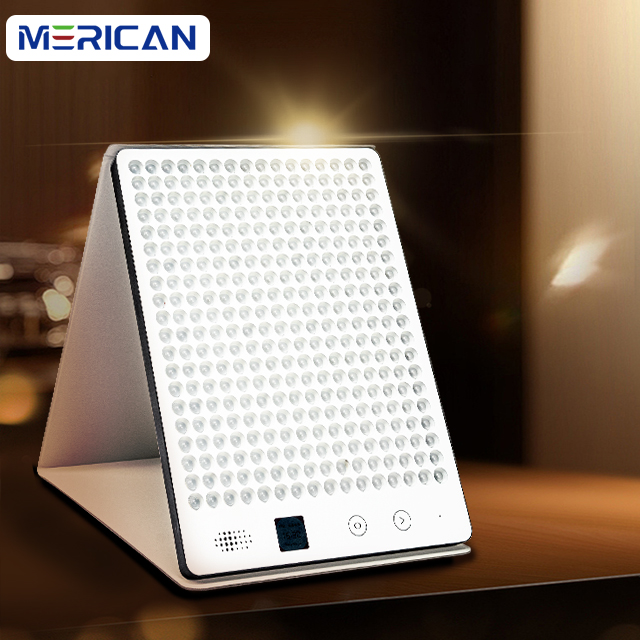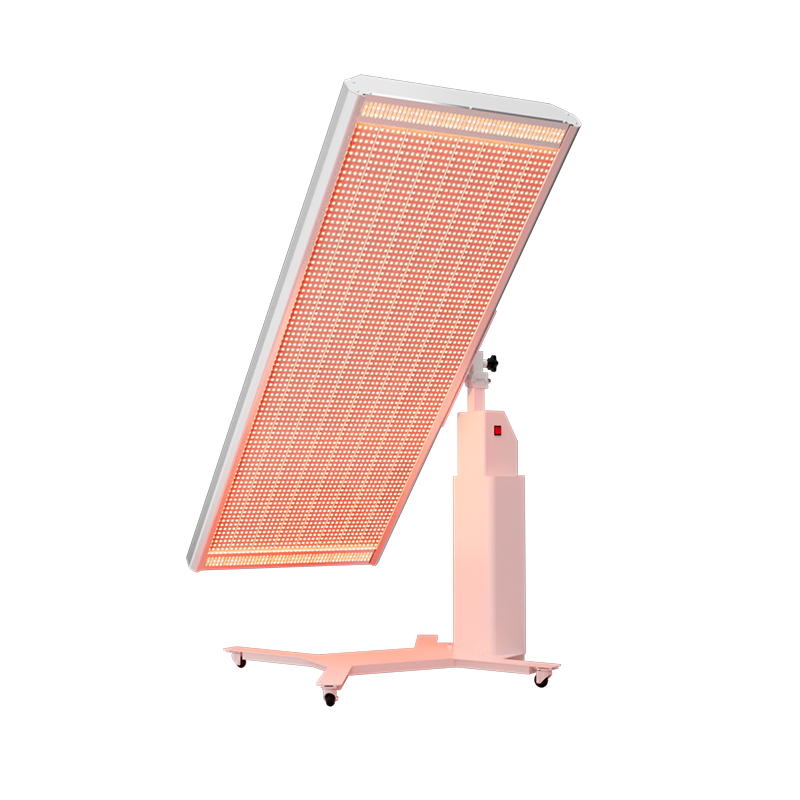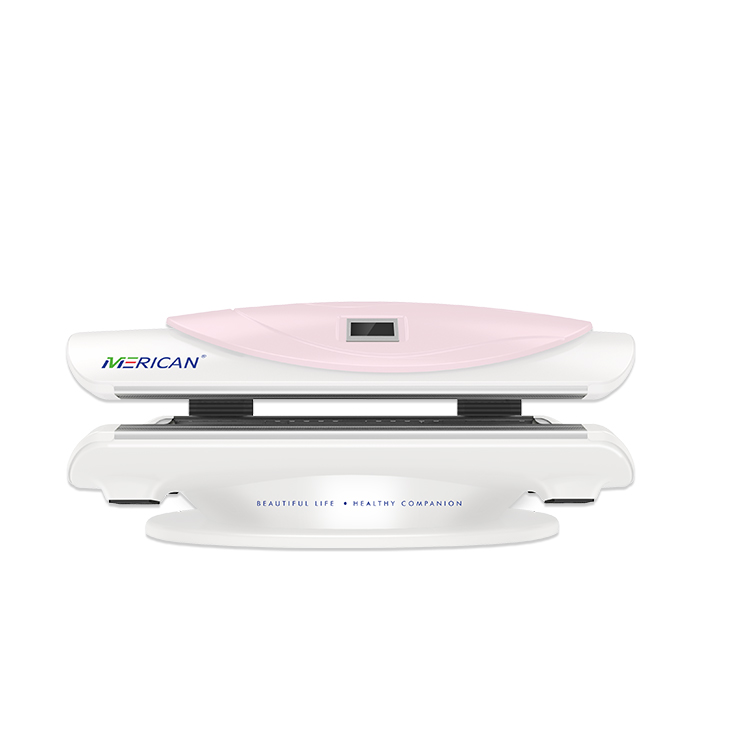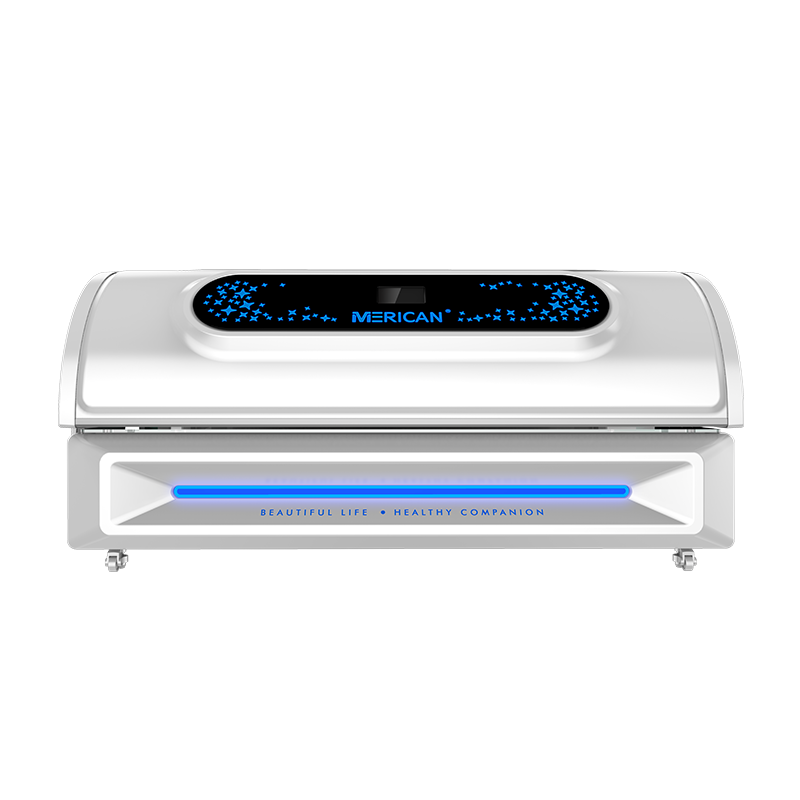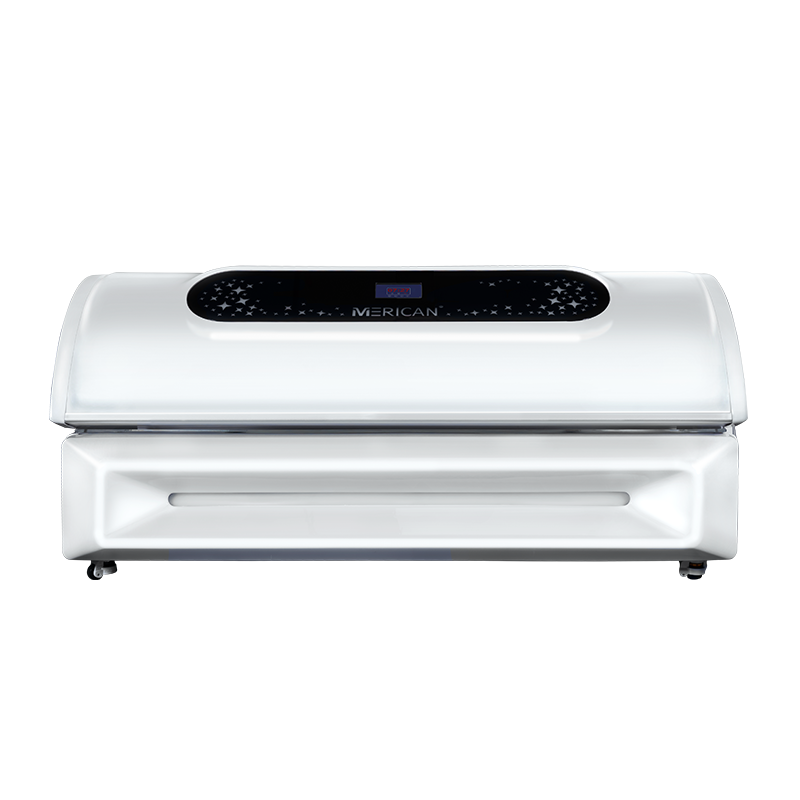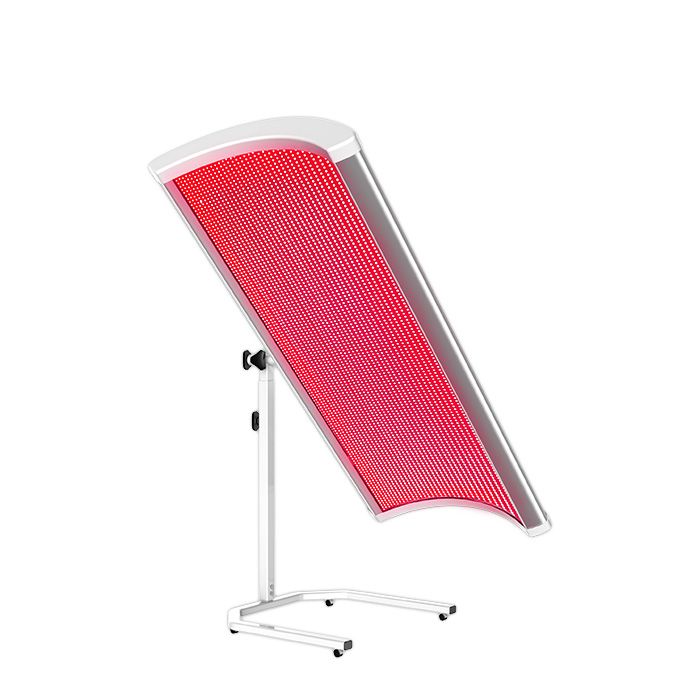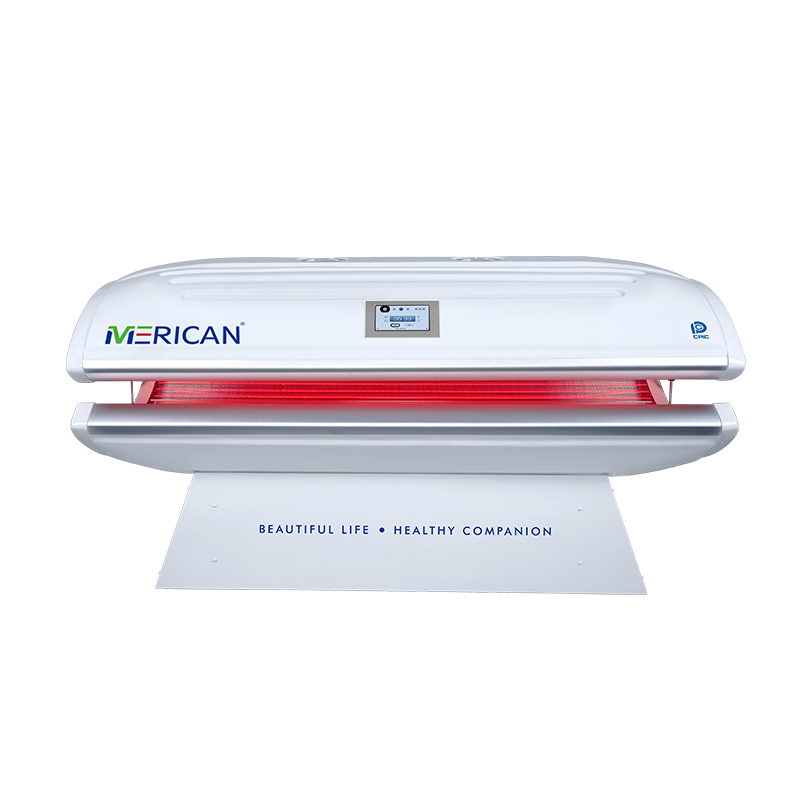Rotlichttherapie (RLT), auch bekannt als Low-Level-Lichttherapie (Lllt) oder Photobiomodulation, verwendet spezifische Wellenlängen von rotem und nahinfrarotem Licht (normalerweise 630–660 nm für Rot und 810–850 nm für nahes Infrarot) um zelluläre Prozesse anzuregen, beschleunigen die Heilung, und die allgemeine Gewebefunktion verbessern.
Es basiert auf jahrzehntelanger Forschung in der Dermatologie, Sportmedizin, und regenerative Medizin.
Wie die Rotlichttherapie funktioniert
RLT arbeitet am zelluläre Ebene, Betroffen sind vor allem die Mitochondrien – das „Kraftwerk“ der Zellen.
- Photonenabsorption:
- Rote und nahinfrarote Photonen dringen in Haut und Gewebe ein.
- Zellen absorbieren diese Photonen durch Cytochrom-C-Oxidase, ein Enzym in der mitochondrialen Atmungskette.
- Erhöhte ATP-Produktion:
- Die Photonenabsorption stimuliert die Mitochondrien, mehr zu produzieren ATP (Adenosintriphosphat) — das Energiemolekül der Zellen.
- Mehr ATP bedeutet, dass Zellen vorhanden sind mehr Energie zur Reparatur, regenerieren, und effizient funktionieren.
- Zellulare Signalübertragung & Genexpression:
- RLT moduliert reaktive Sauerstoffspezies (Ros) und Stickoxid (NEIN) in Zellen.
- Dadurch werden Entzündungen reduziert, verbessert die Durchblutung, und aktiviert Reparaturgene.
Biologische Wirkungen der Rotlichttherapie
| Wirkung | Wie es funktioniert | Vorteile |
|---|---|---|
| Kollagen & Elastin-Stimulation | Aktiviert Fibroblasten | Fester, enger, jünger aussehende Haut |
| Wundheilung & Gewebereparatur | Erhöht ATP & Blutfluss | Schnellere Genesung nach Verletzungen, Narben, und brennt |
| Reduzierte Entzündungen | Moduliert ROS & entzündliche Zytokine | Lindert Arthritis, Muskelkater, und entzündliche Hauterkrankungen |
| Schmerzlinderung | Verbessert die Durchblutung und Nervenfunktion | Hilft bei chronischen Schmerzen, Gelenkbeschwerden, und Schmerzen nach dem Training |
| Verbesserte Durchblutung | Erhöht den Stickoxid- und mikrovaskulären Fluss | Verbessert den Sauerstoffgehalt & Nährstoffabgabe, unterstützt die Gewebereparatur |
| Stimulierung des Haarwachstums | Aktiviert Follikelzellen | Hilft bei androgener Alopezie oder Haarausfall |
Tiefe & Wellenlänge ist wichtig
- Rotlicht (630–660 nm): Eindringt oberflächliche Schichten (~5–10 mm) — ideal für die Haut, Kollagen, und Pigmentierung.
- Nahinfrarot (810–850 nm): Eindringt Tiefere Gewebe (~30–50 mm) — wirksam für die Gelenke, Muskeln, Sehnen, und Nervenreparatur.
Die meisten klinisch wirksamen Geräte kombinieren sowohl rote als auch naheinfrarote Wellenlängen, um gezielt zu wirken Oberflächen- und Tiefengewebe gleichzeitig.
Unterstützende wissenschaftliche Beweise
- Hautverjüngung: Mehrere Studien zeigen reduzierte Falten, Verbesserte Hautelastizität, und schnellere Heilung von Narben.
- Schmerz & Entzündung: Randomisierte Studien zeigen reduzierte Gelenkschmerzen und Steifheit bei Arthritis und Sehnenentzündungen.
- Wundheilung: Studien zu Verbrennungen und Operationswunden zeigen schnellere Gewebereparatur.
- Nachwachsen der Haare: Klinische Studien zeigen erhöhte Haardichte bei androgener Alopezie.
Referenzen:
- Hamblin, HERR., Photomedizin und Laserchirurgie, 2017
- Avci P. et al., Seminare in Hautmedizin und Chirurgie, 2013
- Chung H. et al., Annalen der biomedizinischen Technik, 2012
So maximieren Sie die Effektivität
- Wellenlänge: Verwenden Sie 630–660 nm Rot + 810–850 nm Nahinfrarot für die meisten Vorteile.
- Sitzungsdauer: 10–20 Minuten pro Bereich.
- Frequenz: 3–5 Mal pro Woche.
- Gerätequalität: Wählen Sie Geräte mit hohe Bestrahlung / Ausgabe für eine sinnvolle Therapie.
Überbelichtung ist im Allgemeinen sicher, aber unnötig. Halten Sie sich für optimale Ergebnisse an die empfohlenen Zeiten und Entfernungen.
Fazit
Die Rotlichttherapie funktioniert energetisierende Zellen, Entzündungen reduzieren, und Verbesserung der Reparaturmechanismen durch Photobiomodulation.
Es hat weitreichende Vorteile für Haut, Muskeln, Gelenke, und die allgemeine Zellgesundheit, gestützt durch wissenschaftliche Forschung und klinische Studien.
Professionelle Geräte wie MERICAN Rotlichttherapiesysteme kombinieren 660 nm rot + 850 nm Nahinfrarot-LEDs, beides zu gewährleisten Vorteile für die oberflächliche Haut und das tiefe Gewebe in einer Therapiesitzung.

